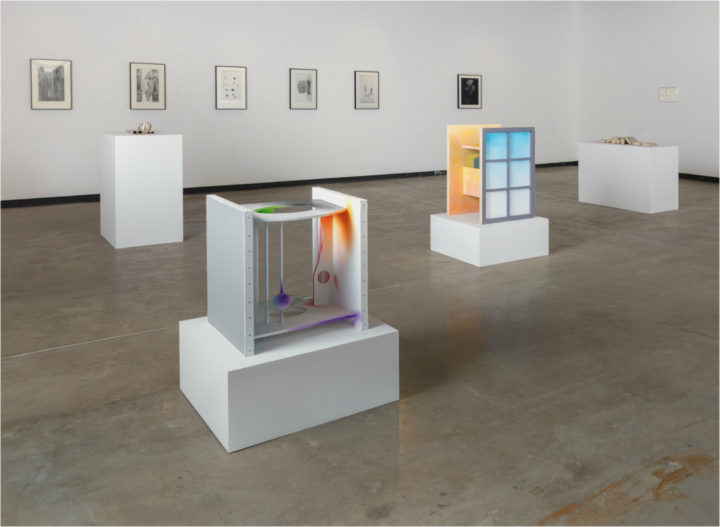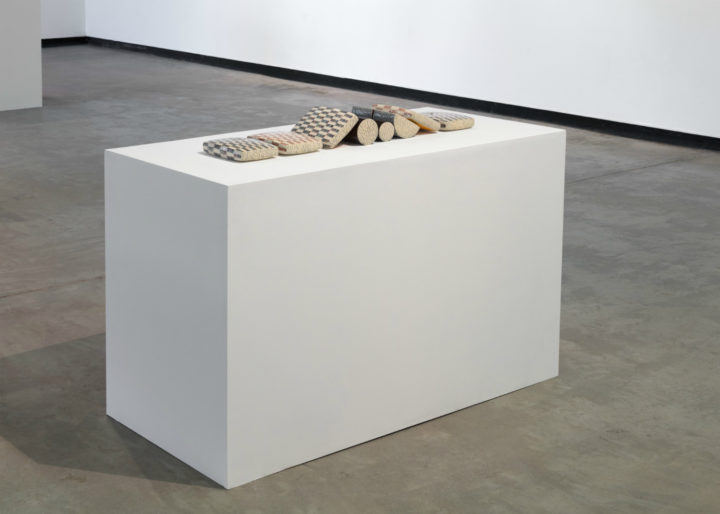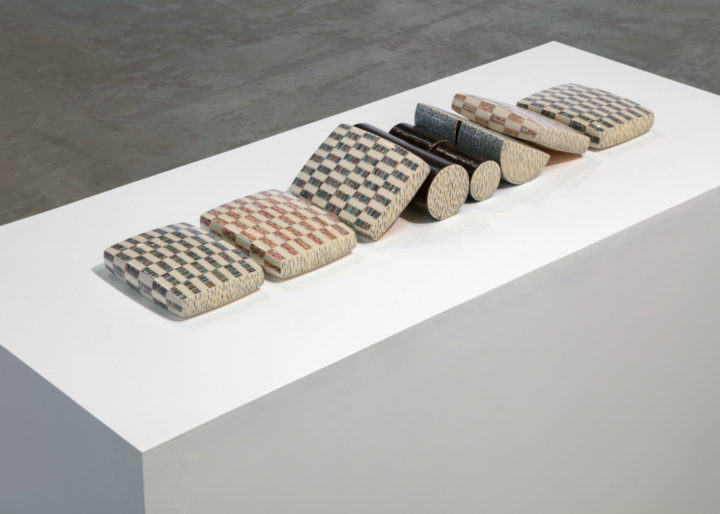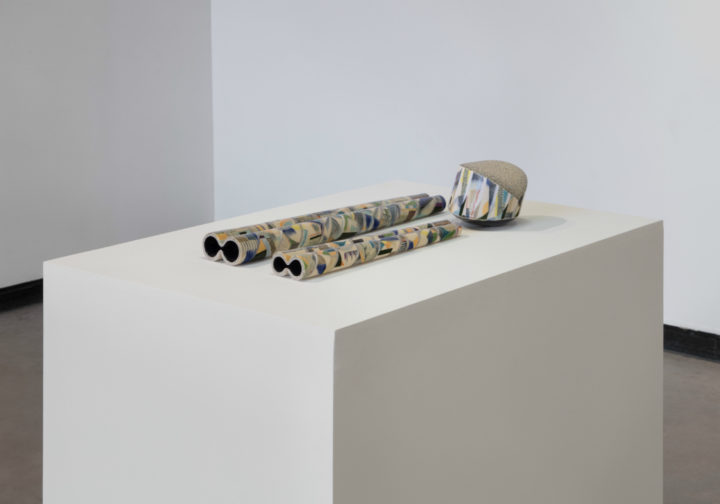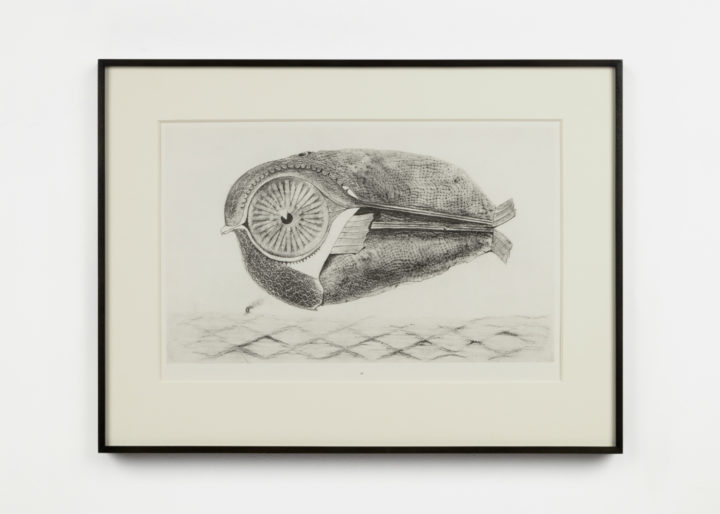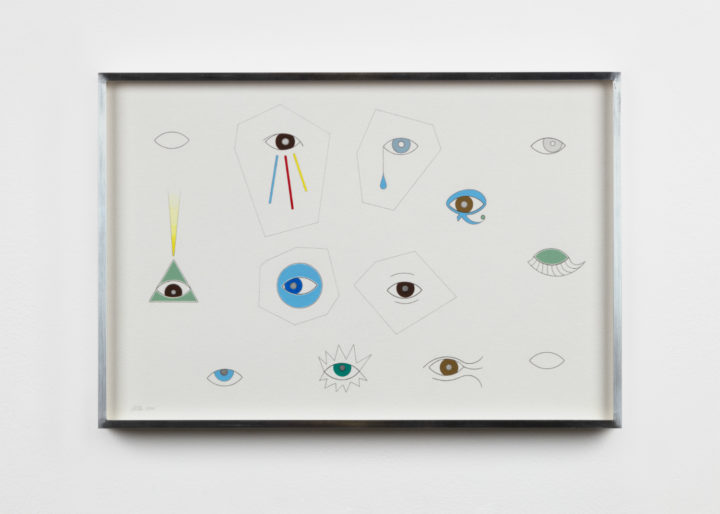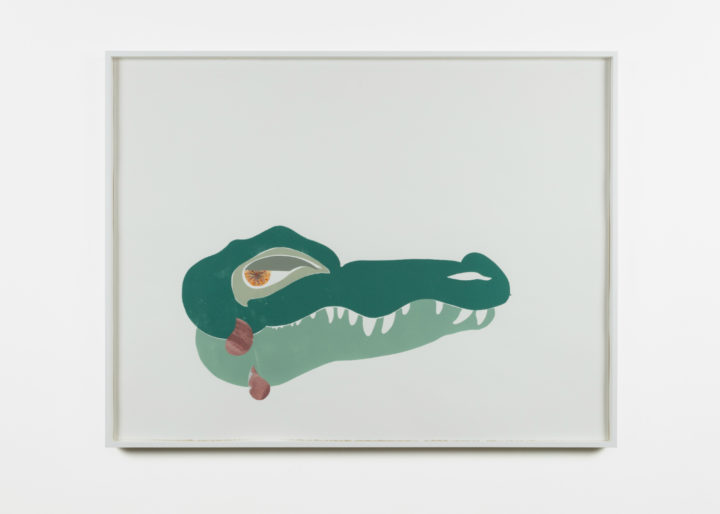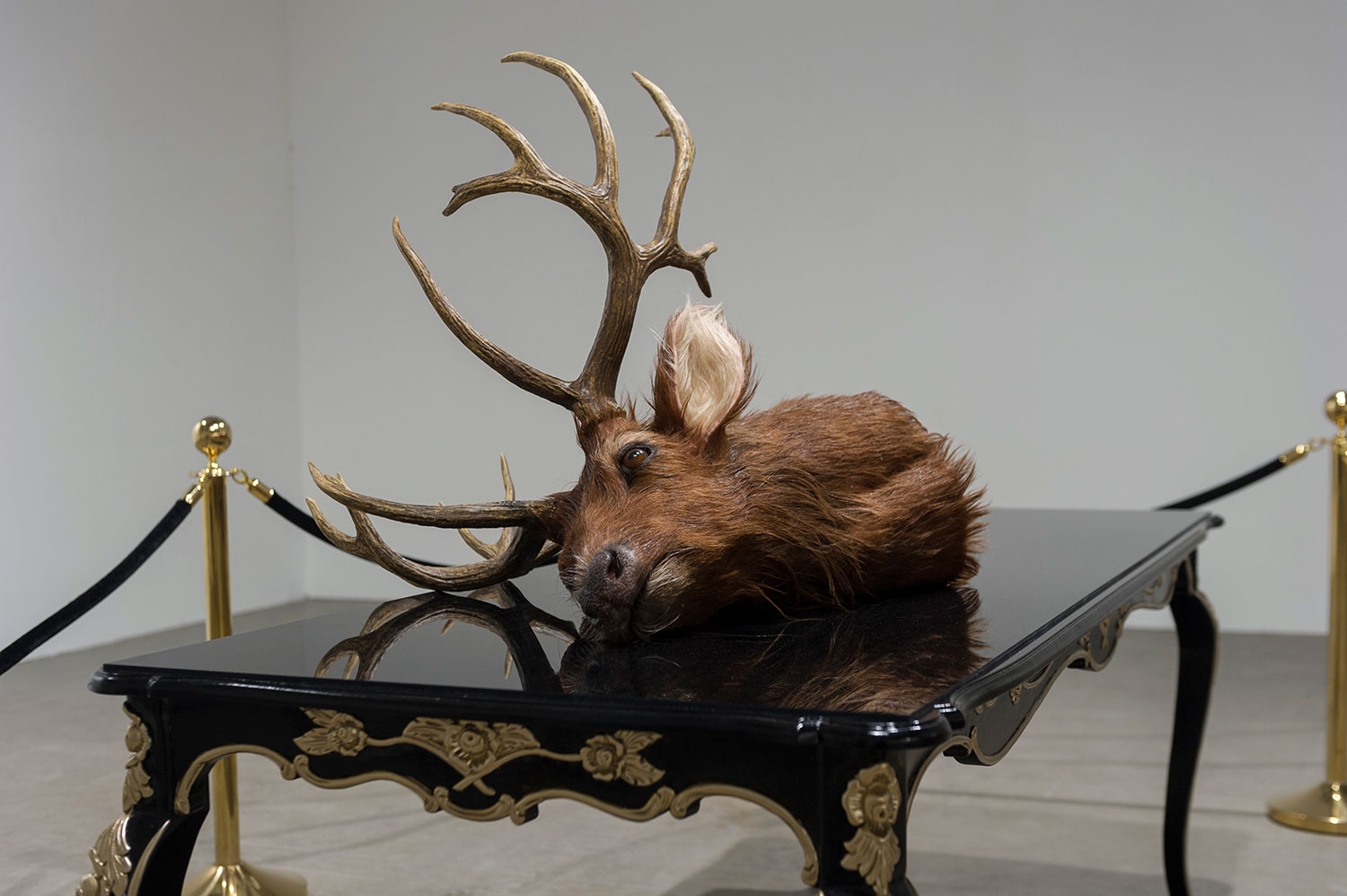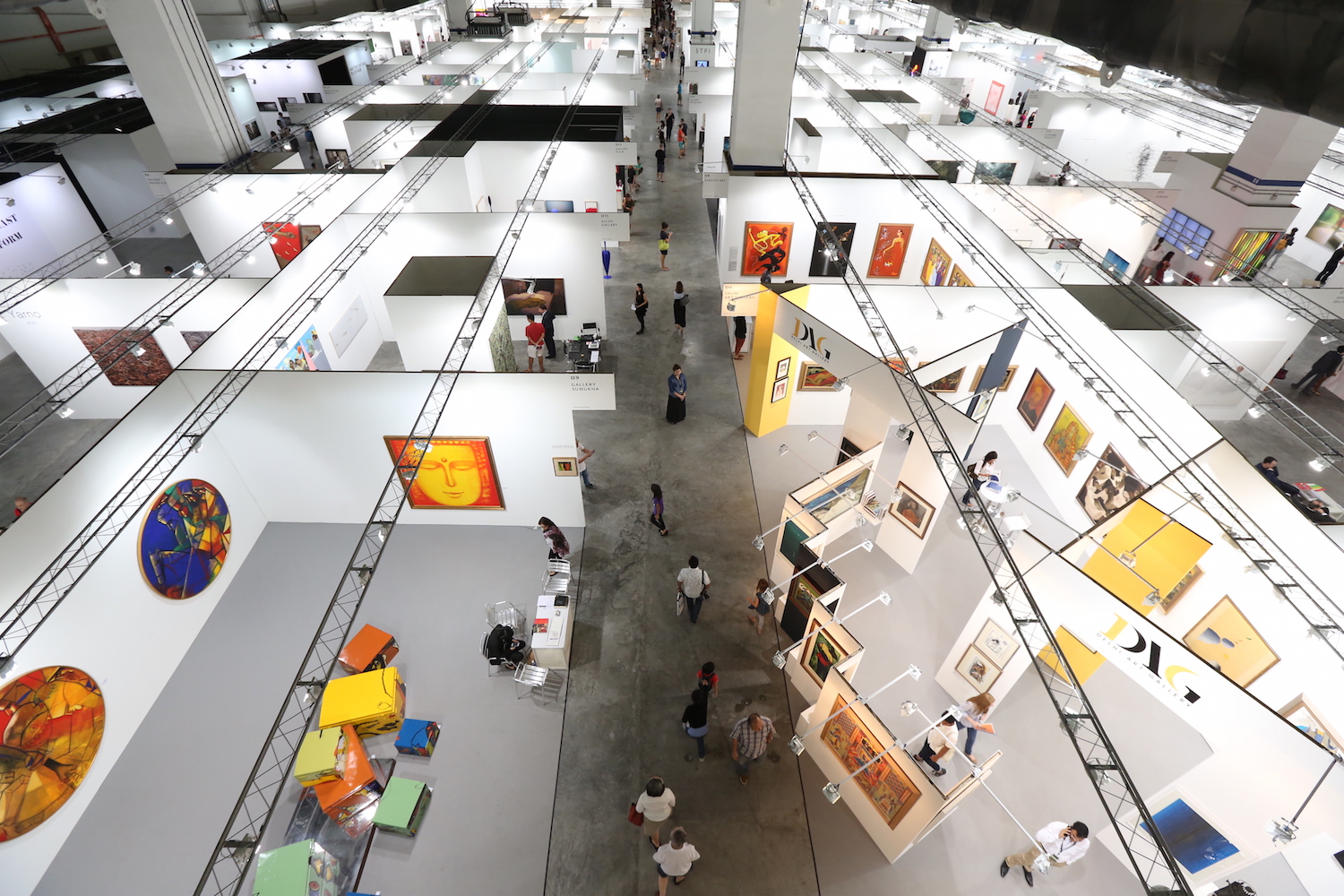Days go by in LA with Dyson-induced existentialism. I stick dripping hands under those drying machines and nothing happens. Automatic doors don’t open. Nothing revolves as it should. I proceed with ghostly grasps through my daily life. And to top it off, since I’m subletting, my roommates have decided to prepare for our yearly house inspection by asking me to turn my room into something resembling a guest room. “Guess I’ll self-erase,” I text them back. Guess I’ll just go ahead and remove any trace of my existence at all. Or, guess I’ll go see some art. Which is not the only time that I find the SoCal non-place thing exciting, though culture’s vortex is undoubtedly one of its more seductive sites. Case in point, a few weeks ago I decided to play hooky from life to drive upstate to an eerily nondescript place with a particularly foreign friend. He picked me up in the morning to drive about two hours north of LA to see an exhibition in Bakersfield: “Collapsing Stage, The.” (On Bakersfield: think boutique hotels and hipster cafés called Smitten planted amid the rough trade of truck stops and pastel “saloons” that make for the town’s brawling nightlife, or so I hear.)
The title’s syntactical stutters aside, a sign of being smitten if any, the exhibition read like a rebus punningly hinting at gestures you can “see through”: Kate Costello’s inked silhouette of a crying crocodile (false tears), the curator’s found “original replica” bird eggs (Disneyland-esque hyperrealism), or Torbjörn Vejvi’s spaced-out stages for — empty swimming pools, I thought — some Art Deco-inflected sci-fi (“where dreams are manufactured [and] water is of paramount importance,”[1] like Moebius comics or Los Angeles). Elsewhere, ceramic tubes resembling bird-watching impedimenta, almond-shaped surrealist beasts, watercolor flash of blinking eyelids, and the grafted back of a flat head (penetrating thought and/or the filmy eroticism of nature’s spontaneity and forms). Were I to take a stab at what this all “means,” I would think through all the oval cognates, ranging from the fragile spheres of faux eggs to the orbs that float inside the two sculptures. Or, consider how such spaces are made through acts of twisting, piercing, or boring holes (Bakersfield ennui implied in the latter). What false tears, brittle and fabricated shells, and Moebius-tinged theatrics hold in common is a frame formed around an absent center. Absence of a distinct origin, of a steady center, concept, or memory, which sees itself instead filled with fantasy through the grafting of alternate worlds. God forbid this be a nudge to art’s “improbable claim” to autonomy, frustrated as it was in modernity (just like Sylvia Plath!) about not being God. No, these spaces form the scaffolding made to carry out those little plays we invent in our heads. These are the fantasies, the small melodramas, which force crocodile tears out of emotion’s unnecessary burden in the “real,” or the stuff that fits neatly into the frame of art though lets us leave the scene unscathed, or the kind of city so utterly lacking of context that delusions quickly make themselves available as escapes — perhaps by the simple promise of anonymity, or boredom here testing out a return to its more au naturel states. The little perforations to our day to day, wherein bird watching begins to share some similarities with cruising, and cartoons their frame-by-frame playback with fantasy. This type of collapse, if I can call it that, has to do with the sinking, sometimes sexy feeling that everything isn’t quite right but at least you have your delusions, nature’s twisted version of a fantasy.

